
Knitwear is always changing, and you can see it everywhere. You see it on runways and in your favorite stores. Today, new technology and creative ideas help you make knitted dresses. These dresses feel new and fit well. The knitwear market is growing fast. This is because more people want natural fabrics and bold designs.
You have more choices than ever before. Learning technical skills helps you turn any Seasonal Style into something special.
Aspect | Data / Trend Statistic |
|---|---|
Market Size (2023) | |
Projected Market Size (2030) | US$ 165.92 billion |
CAGR (2023-2030) | 5.83% |
Online Distribution CAGR | 9% |
Men’s Consumer Group CAGR | 6.7% |
Asia-Pacific Regional CAGR | 7.2% |
Growth Drivers | More people have extra money, play sports, want natural fibers, and shop online more |
Regional Growth Factors | People in Asia-Pacific have more money and care more about fashion (China, Japan, India, Australia, South Korea) |
Market Trends | More people buy online in BRICS countries, use smartphones, join the middle class, and use new e-commerce technology |
COVID-19 Impact | Looked at with help from governments and company plans to recover |
Consumer Behavior | More people want natural fabrics and special clothes, follow social media, and like shopping online |
Key Takeaways
Knit dresses mix style for each season with skill. They are comfy, look good, fit well, and last a long time.
Picking the right yarn and gauge changes how warm, soft, or strong the dress is. You can use wool, cashmere, or cotton blends for different weather.
New knitting machines and digital tools help make patterns exact. They also help dresses fit better and get made faster with less waste.
You can change your dress by picking the length or neckline. You can add details to make your knitwear special and cool.
Using recycled yarns, solar power, and QR labels helps the planet. These choices let you pick dresses that are good for the earth.
Seasonal Style Trends
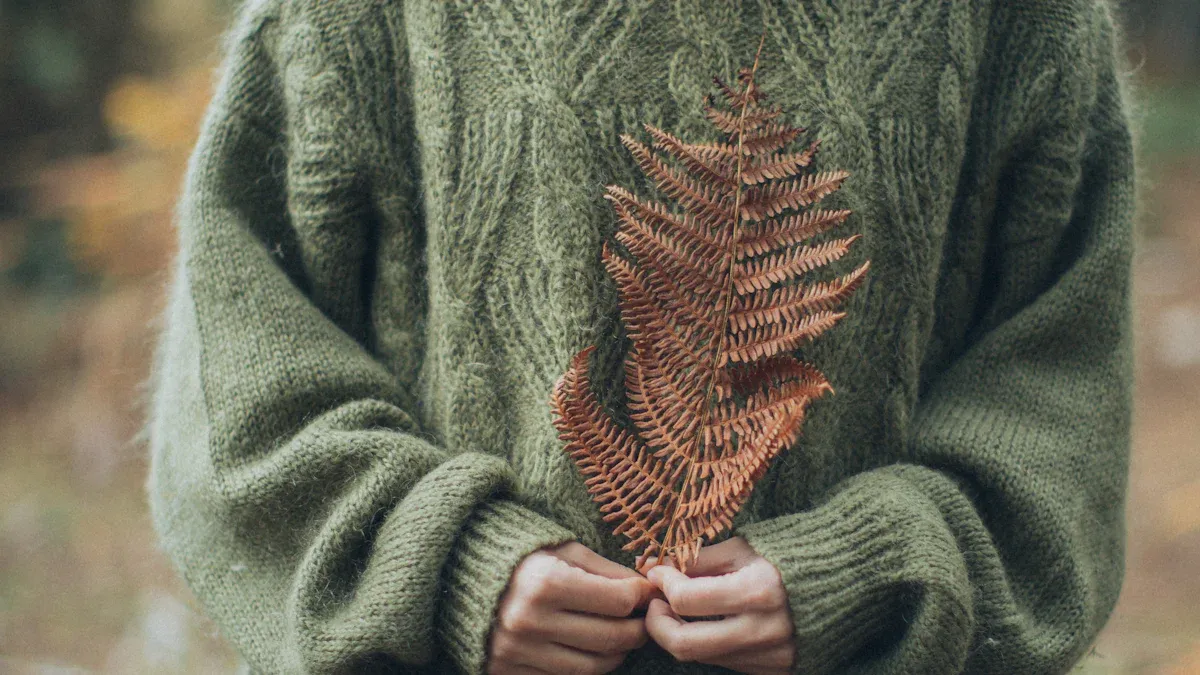
Market Trends
You see the biggest changes in knit dresses during fashion weeks in Paris, London, and Milan. Designers show off new ideas for fall and spring. These runway looks shape what you find in stores. Right now, long sweater dresses and maxi silhouettes are everywhere. Retailers notice more people want these styles, so they buy more for their stores each year. You also see a rise in turtlenecks, loose cuts, and cozy fits. These trends help you stay warm and look stylish at the same time. When you pick a knit dress, you get both comfort and elegance. That’s what makes Seasonal Style so exciting.
Color Stories
Color plays a huge role in how you feel about a dress. This season, rich earth tones like brown and burgundy stand out. You also see classic neutrals, such as black and cream, in many collections. These colors work well for both casual and dressy looks. Stores use color stories to help you find what you love. When brands focus on the right colors, they see big results:
Metric | Result After Color Strategy Implementation |
|---|---|
Conversion Rate Increase | 45% |
Social Media Engagement Increase | 60% |
Return Rate Reduction | 30% |
Average Order Value Increase | 25% |
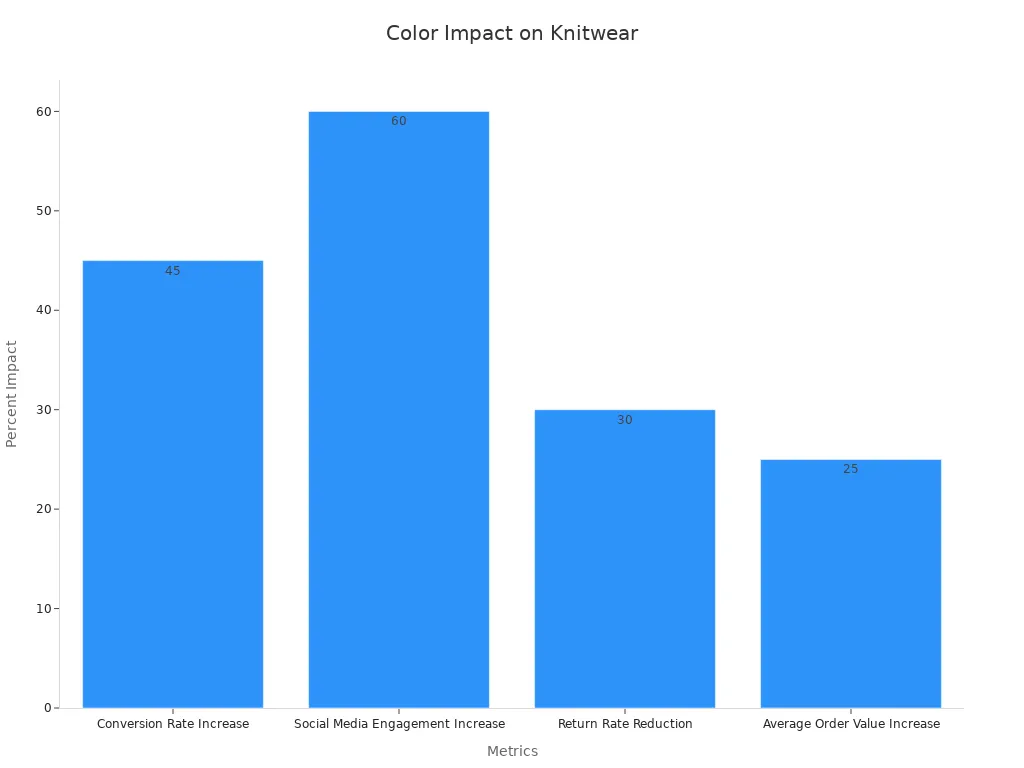
You can see how the right Seasonal Style colors make a difference. More people buy, share, and keep their dresses.
Silhouettes and Details
Designers love to play with shapes and details. You find pleats, modern necklines, and voluminous sleeves in many new knit dresses. These touches make each piece special. Some dresses have a simple, easy fit for autumn. Others use bold cables or extra-long sleeves for a statement look. You can choose a style that matches your mood or the weather. That’s the fun of Seasonal Style—you get to mix comfort, warmth, and fashion in every dress.
Yarn and Fabric Choices
Fiber Selection
When you pick yarn for a knitted dress, you want it to feel soft, last long, and look great all season. Premium yarns like wool, cashmere, and Italian cotton give you that special touch. Wool keeps you warm in fall and winter. Cashmere feels extra soft and light. Italian cotton works well for spring and summer. Many brands use special tests to check fiber quality. They look at things like fiber strength and softness. These tests help you get dresses that feel good and last longer. Some companies even use computer programs to pick the best cotton, making sure your dress stays nice after many wears.
You can also find fiber blends for different needs:
Cotton-acrylic blends work for trans-seasonal styles, like a button-down knit dress.
Wool-viscose blends add warmth and drape, perfect for maxi or midi dresses.
Recycled polyester keeps fast-fashion pieces affordable and low-pill.
Gauge and Texture
Gauge means how tight or loose the stitches are. If you want a smooth, refined look, go for a fine gauge like 12 gg. This works well for sweater dresses you can wear to work or dinner. For chunkier, cozy autumn looks, try a 7 gg gauge. This gives you a thicker, warmer dress—great for cold days. The texture also changes with the stitch type. Rib and interlock knits feel sturdy and keep their shape. Lace knits feel lighter and let more air through.
Tip: Try different gauges and textures to match your style and the season.
Durability and Care
You want your dress to last, so durability matters. Companies test yarns and fabrics for strength, shrinkage, and colorfastness. Thicker fabrics resist wrinkles and keep their shape better. Special lab tests check how much a dress will shrink or fade after washing. For example, dark colors like black and burgundy stay rich through 30+ washes if tested right. Knits with balanced stitches hold up better and keep their fit. When you care for your dress—wash gently and dry flat—it stays looking new for longer.
Fiber Type | Best For | Care Tip |
|---|---|---|
Wool | Warmth, durability | Hand wash, dry flat |
Cashmere | Softness, luxury | Gentle wash, avoid heat |
Cotton | Breathability | Machine wash cold |
Recycled Polyester | Easy care | Low heat, quick dry |
Technical Precision
Advanced Techniques
A knitted dress is more than just yarn and needles. Factories today use special knitting machines with digital technology and artificial intelligence. These machines make patterns and shapes very fast and very well. Dresses have neat stitches, cool textures, and creative designs that would take a long time by hand.
Here’s how factories do it:
Digital machines work fast and let you change each dress.
CNC and AI help control every stitch, so there are fewer mistakes.
Machines use eco-friendly yarns and help save materials.
Real-time checks keep machines working and stop long breaks.
Automatic yarn feeders and digital patterns help switch styles quickly.
Error systems find problems early, so dresses turn out better.
Factories in Asia Pacific are leaders because they have strong textile industries and government help. North America and Europe also use these machines to make custom and green fashion. The market for sweater knitting machines is growing fast. It may go from $1.5 billion in 2023 to $2.5 billion by 2032.
There are also new ideas like the 4D Knit Dress. This uses heat-activated yarn and smart machines to make dresses that fit your body well. You get a dress that feels made just for you.
Fit and Silhouette
Getting the right fit and shape is very important for knitted dresses. New machines let you change the structure in new ways. You can add diagonal seams, sharp pleats, or make the dress seamless for a smooth look. If you want bold cables or a fitted shape, machines can do that easily.
Special finishing techniques help too. Steam-setting helps dresses keep their shape after washing. Seamless construction means no thick seams, so your dress feels soft and looks neat. Pleats and ribbing add texture and help the dress move with you.
Pattern engineering and machine programming make this possible. Digital patterns help dresses fit better and look nice. Studies show new algorithms for yarn tension can cut tension changes by over 33% and make response times faster by more than 35%. This means your dress will have even stitches, bounce back better, and look smooth, no matter what yarn you use.
Tip: Try seamless construction for comfort, or add pleats for a dress that stands out.
Quality Control
You want every dress to look good and last a long time. That’s why factories check quality at every step. Here’s what they do:
Step | What It Checks For |
|---|---|
Yarn Incoming QC | Twist, moisture, dye-lot consistency |
Machine Programming | Pattern accuracy, stitch count, tension |
Inline Loop-Density Scanning | Real-time defect detection with AI cameras |
Steam-Set & Stabilization | Shape retention, no post-wash drop |
Final AQL Inspection | Color, measurements, pilling, finish |
Smart machines use IoT and machine learning to watch for problems as they happen. Real-time checks help find pattern or fabric issues right away. Predictive analytics can warn you before a machine breaks, saving time and money.
Factories use analytics to improve every step. They make work faster, reduce breaks, and make sure every dress is high quality. When you use recycled fibers or eco-friendly dyes, these machines help keep quality high and waste low.
Note: Quality control is not just about finding mistakes. It makes sure every dress feels special, fits well, and lasts a long time.
With technical precision, you get more than a dress. You get smart design, a great fit, and lasting quality—ready for any season.
From Simple to Statement
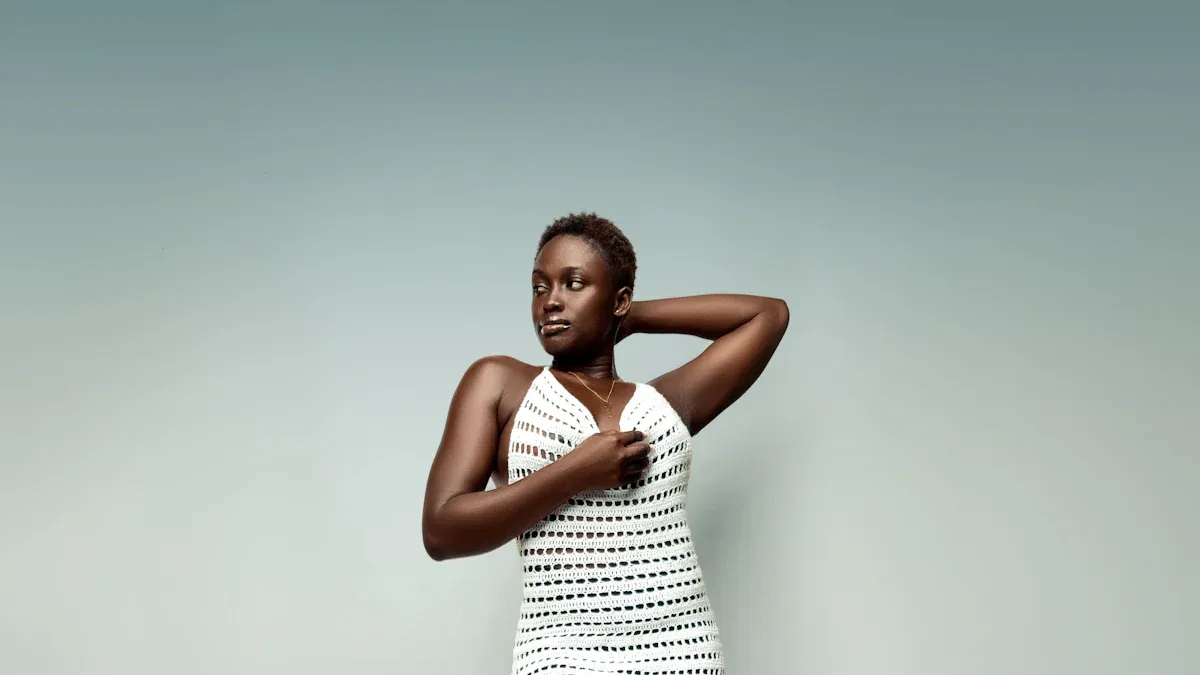
Easy Autumn Staples
You might want a knit dress that is easy to wear. It should look nice for autumn. Start with simple patterns, like straight-cut sweater dresses. Ribbed minis are also a good choice. These styles work for school, work, or weekends. Pick soft yarns in earth tones or classic colors. This matches the Seasonal Style you see in stores. Look for patterns with clear steps and basic stitches. You can finish a simple dress quickly. Then you can wear it right away.
Tip: Try a 12 gg fine gauge for a smooth, light feel. This makes your dress great for layering.
Cable Sweater Dresses
Cable sweater dresses really stand out. They started in Scottish fishing towns. Cables showed skill and tradition there. Now, you see cable knits on runways and celebrities. Fashion houses use bright colors and bold shapes with cables. This trend mixes simple autumn looks with cool details. You get a dress that stands out but never goes out of style. Cable sweater dresses work for many events. You can wear them on casual days or at special times.
To make one, pick a pattern with clear cable charts. Use a chunky 7 gg gauge for thick, warm cables. Follow each step and check your work often. You will see your skills get better as you finish each part.
Customization
You can make your knit dress special. Change the length, add pockets, or pick a neckline you like. Many brands use digital sampling and fast testing to try new ideas. You can do this too by making small changes before you finish your dress. Customization helps you get the fit and style you want.
Check out how brands measure success with customization:
Description | |
|---|---|
Website Traffic | Counts how many people visit the brand’s website. |
Engagement Rates | Shows how much customers interact with online content. |
Social Media Mentions | Tracks how often people talk about the brand online. |
Conversion Rates | Tells what percent of visitors buy something. |
Revenue Generated | Shows the total money made from campaigns. |
Brands get more attention and sales when they let people personalize knit dresses. You can use these ideas to make your own dress unique and stylish.
Sustainability and Innovation
Eco-Friendly Materials
You want your knit dress to look good and feel good for the planet. Many brands now use GRS-certified recycled yarns. These yarns come from old clothes or plastic bottles. They help reduce waste and save resources. Some factories use solar power to run their knitting machines. This means less pollution and lower energy bills. Water-free steam finishing is another smart step. It keeps your dress soft and smooth without wasting water. When you pick a dress made this way, you help protect the earth.
Did you know? Using recycled yarns and solar-powered knitting can cut a factory’s carbon footprint by up to 30%.
Custom-Fit Technology
You can now get a dress that fits you perfectly. New technology makes this possible. Body scanning and scan-to-pattern tools capture your exact shape. This means your dress hugs you in all the right places. 3D weaving and printing create seamless dresses with almost no waste. You get a better fit and help the planet at the same time.
Virtual try-ons and 3D avatars cut product returns by 60%. You see how the dress looks before you buy.
Brands using AR see double the conversion rates. More people buy because they trust the fit.
Smart textiles are a $6 billion market. Big brands like Adidas and Nike use 3D printing for custom-fit, zero-waste clothes.
Most big brands use these tools, but small companies are just starting. This means you will see even more custom-fit options soon.
Transparency
You want to know where your dress comes from. Many brands now add QR labels to each dress. You scan the code with your phone. You see where the yarn came from, how the dress was made, and even who made it. This builds trust and helps you make smart choices.
Feature | What You Get |
|---|---|
QR Code Labels | Track dress from yarn to store |
GRS Certification | Proof of recycled content |
Water-Free Finish | Lower impact on the planet |
When you choose a dress with a QR label, you support honest and green fashion.
Practical Tips
Troubleshooting
Knitting a dress can feel tricky sometimes. You might see loose stitches, uneven edges, or a dress that stretches out after washing. Don’t worry! You can fix most problems with a few simple steps:
Loose stitches: Try using smaller needles or check your tension. Practice on a small swatch first.
Edges curling: Add a border of ribbing or garter stitch. This helps the edges stay flat.
Dress losing shape: Always block your dress after knitting. Lay it flat to dry. This keeps the shape strong.
Color fading: Wash your dress in cold water and use gentle soap. Turn it inside out before washing.
Tip: Keep a notebook for your projects. Write down what works and what doesn’t. This helps you learn faster!
Time Management
You want to finish your dress on time, especially if you plan to wear it for a special event. Good planning makes a big difference.
Break your project into steps: List each part, like knitting the body, sleeves, and finishing.
Set small goals: Try to finish one section each week.
Use a timer: Work in short bursts, like 30 minutes at a time.
Track your progress: Mark off each step as you finish.
Step | Time Estimate |
|---|---|
Body | 5-7 days |
Sleeves | 2-3 days |
Finishing | 1-2 days |
Note: If you get stuck, take a break. Fresh eyes help you spot mistakes and find solutions.
Learning Resources
You can always learn more about knitting. Many free and paid resources help you improve your skills and stay on trend.
YouTube channels: Try “VeryPink Knits” or “Expression Fiber Arts” for step-by-step videos.
Online forums: Join Ravelry or Reddit’s r/knitting to ask questions and share photos.
Books: “The Knitter’s Handbook” and “Vogue Knitting” offer great tips and patterns.
Brand blogs: Many yarn brands post new trends and tutorials on their websites.
Stay curious! The more you learn, the better your knit dresses will look and feel.
You now know how to blend creative ideas with technical skills to make every knitted dress shine. Start with the right yarn, follow smart patterns, and use new tools for a perfect fit.
Try bold cables or keep it simple—both work with good technique.
Explore new materials and trends to keep your Seasonal Style fresh.
Ready to show off your work? Share your favorite knit dress projects and inspire others!
FAQ
What yarn blend works best for an autumn knit dress?
You get the best mix of warmth and comfort with a wool-viscose blend. Wool keeps you cozy, while viscose adds softness and drape. This combo works great for maxi or midi knit dresses in cooler weather.
How do you keep dark knit dresses from fading?
Wash your dress in cold water and turn it inside out. Brands use lab-tested yarns and colorfastness controls. These steps help black and burgundy dresses stay rich and bold, even after 30+ washes.
Can you customize the fit or style of a knit dress?
Yes! You can change the length, pick your favorite neckline, or add pockets. Many brands offer digital sampling and quick changes. This way, you get a dress that fits your style and body.
How do you know if a knit dress is made sustainably?
Look for GRS-certified recycled yarns, solar-powered knitting, or QR labels on the tag. Scan the code to see where your dress came from and how it was made. This helps you shop smarter and greener.



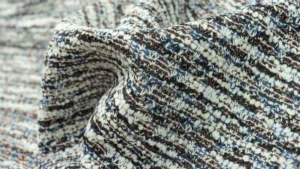
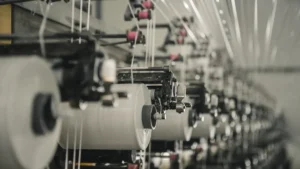
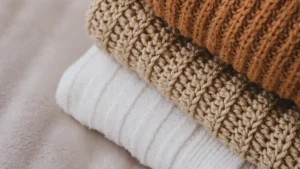


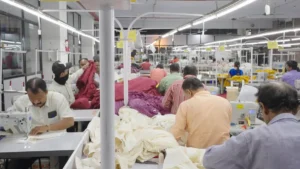

2 thoughts on “Seasonal Style, Technical Precision: Crafting Every Knitted Dress – from Easy Autumn Staples to Statement Cable Sweater Silhouettes”
Pingback: Elevating Everyday Elegance: The Rise of Knit Midi & Mini Dresses in Global Fashion Sourcing
Pingback: Pinstripe Knit Dresses as a Smart Investment for Retailers in 2025